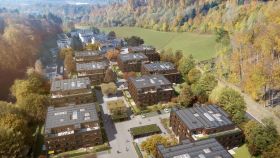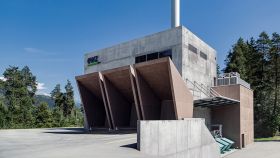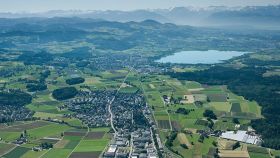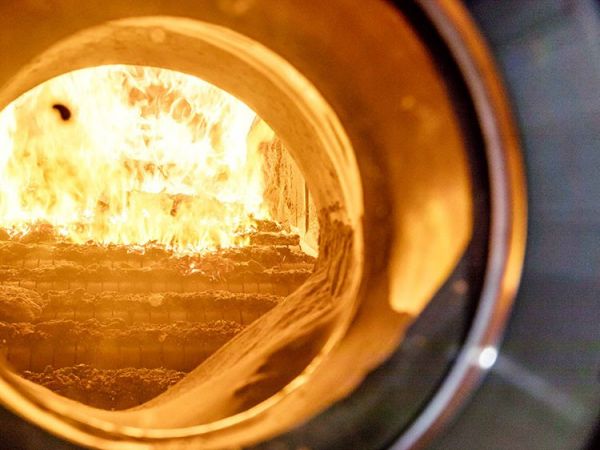
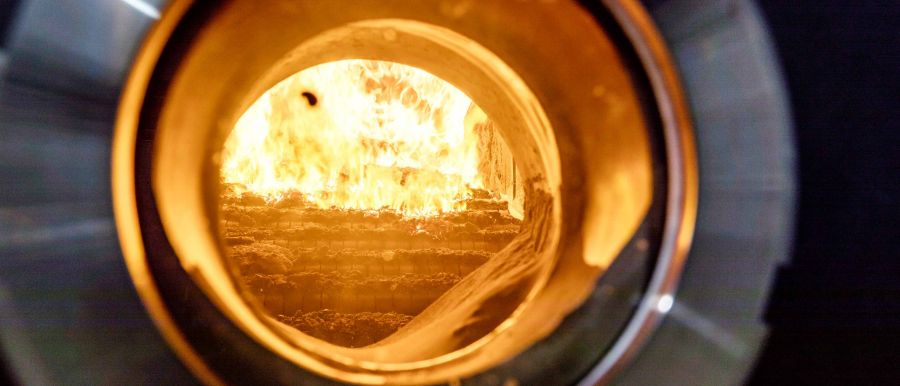
Humans have been using wood for energy production since prehistoric times. With the rise of fossil fuels such as coal, oil and natural gas, wood-fired heating systems disappeared from the scene in many places or were used more as living room decoration. Against the backdrop of climate change, however, wood has been returning to the fore as a renewable energy source in recent years. The gross energy consumption of wood in Switzerland increased from 28,390 terajoules in 2000 to 44,770 in 2020. The share of total energy consumption increased from 2.6 to 4.5 per cent during this period.
The combustion of wood takes place in three phases. At temperatures of up to 150°C, drying takes place first, whereby the water still contained in the wood evaporates. The gaseous compounds of the wood are then released at temperatures between 150 and 600°C. After this phase, known as pyrolysis, charcoal remains. At around 400 to 1,300°C, the actual combustion process (oxidation) takes place with the addition of air or oxygen. This burns the gases released during pyrolysis as well as the charcoal. Only in this final phase is energy released, which is then used to supply heat. Modern burners are designed for the special combustion process of wood, achieving a high level of efficiency with low emissions. The latter is achieved both by the addition of filters and by recirculating exhaust gases into the combustion process. This reduces the firing temperature and thus also the formation of undesirable nitrogen oxides.
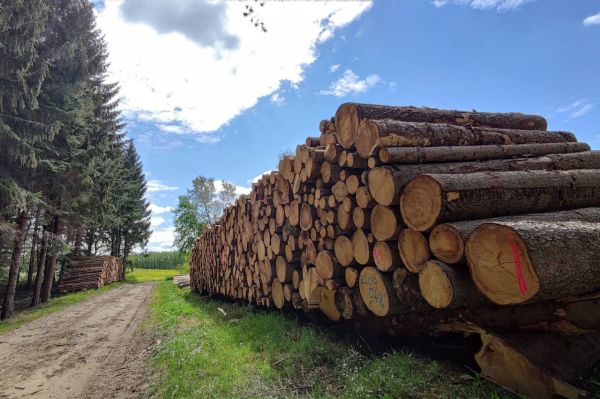
Instead of wood billets, otherwise known as logs, it is mostly wood pellets and wood chips now used for combustion. The rod-like pellets are a highly standardised industrial byproduct of the sawing process. Chips, on the other hand, are mechanically chopped pieces of wood that are not uniform in shape and size. They can be taken straight from the forest for wood heating systems, so no further processing or interim storage is required. Pellets are usually used more in smaller furnaces, wood chips in large plants.
Wood chips are generally cheaper than logs or pellets. The latter perform best in terms of energy density: they contain a converted calorific value of 3.3 megawatt hours per cubic metre. Logs reach 1.3 and chips only 0.8 megawatt hours per cubic metre. This has an impact on the space required for storage. Logs use twice as much space as pellets with the same calorific value, and chips use four times as much again. The available space can therefore by all means play a role in the choice of wood fuel.

Automated systems
Modern wood-fired systems are very different from traditional living room stoves. Not only are they larger, they also usually operate automatically: both the feeding in of the wood and the removal of the ashes are done without human intervention. The automation, the size of the plant and the standardised process significantly reduce pollutants. Filters required by law separate out most of the remaining soot and fine dust particles. Automatic wood-fired systems are generally suitable for larger projects, i.e. for buildings and heating networks, than for single-family homes or apartment buildings. A pellet stove can also be a sensible solution for single-family homes with low heating requirements.
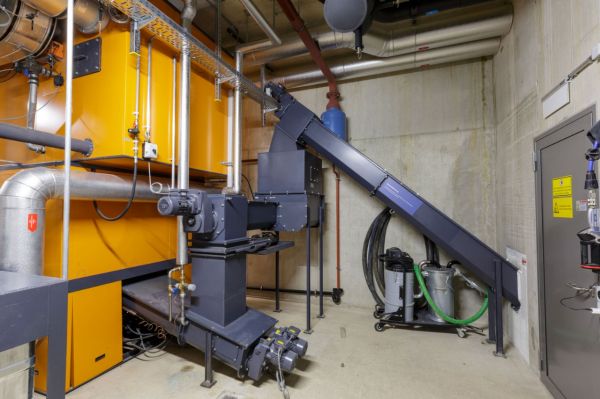
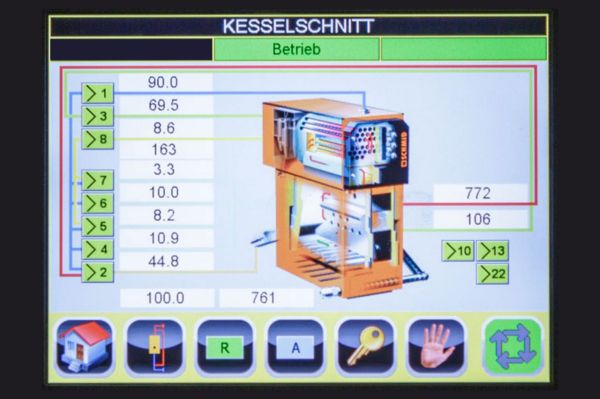
Alternative to heat pumps
Compared to other renewable forms of heating, such as heat pumps, wood firing has the advantage of being able to generate very high temperatures without losing efficiency. Unlike other renewable heating systems, wood-fired heating systems are therefore also suitable for industrial processes that are very energy intensive and require high temperatures. One disadvantage is that wood heating cannot be used for cooling. According to David Füllemann, whether wood-fired heating or a heat pump is the most suitable heating system for a construction project also depends on the location. ‘Wood-fired systems make sense where a heat pump is not possible or the prerequisites for efficient operation are not in place,’ explains our Energy Services Project Manager. ‘For the heat supply of a complex with other potential energy sources, such as lake or groundwater or geothermal probes, I recommend a heat pump instead.’
Strict pollutant regulations
Heating with wood is also sometimes criticised. For example, the pollutants arising during combustion are a subject of discussion. These particulate and soot particles can indeed have a negative impact on health and the environment if they enter the air unfiltered. However, strict particulate matter and exhaust gas regulations have been in place in Switzerland since 2007 for large wood-fired systems with an output of 70 kilowatts and above, and these are becoming increasingly stringent. Emissions are regularly monitored under real conditions. In order to achieve the specified values, modern wood-fired systems have various filters that remove the fine dust and soot particles. In addition, the clean combustion process in automatic furnaces results in significantly fewer pollutants than in an uncontrolled fire. The quality management system QM for Biomass DH Plants from the Swiss Federal Office of Energy provides valuable information on planning and operating wood-fired power plants. The cantons apply these principles when applying for subsidies. This ensures that new wood-fired systems are dimensioned correctly, run on the optimal fuel and are combined with a large heat storage system.
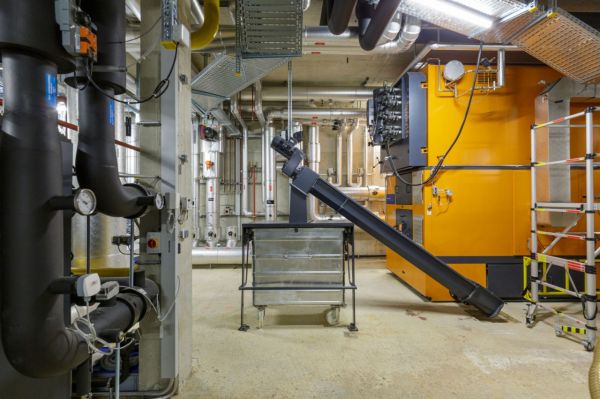
Burning wood also generates carbon dioxide (CO₂), which contributes to global warming. In contrast to fossil fuels such as gas or oil, wood is still considered a renewable and carbon-neutral energy source. A tree absorbs just as much CO₂ during growth as it emits later during combustion or decay. As long as the forest area remains the same size, heating with wood does not lead to a higher CO₂ concentration in the atmosphere. This works well in Switzerland, as its forested area is actually increasing slightly. Where it is not possible to heat with a heat pump, wood firing is surely therefore a more climate-friendly solution than oil or gas heating. It is important to be aware, however, that cleared areas in other countries are not always reforested. Heating with wood is therefore not carbon neutral per se, but depends on the origin of the wood.
Large combustion plant for entire urban areas in Zurich
The Aubrugg wood-fired combined heat and power plant (CHP) generates heat and power from domestic wood and supplies more than 20,000 households in the city of Zurich. In doing so, the plant contributes to sustainable and carbon-neutral energy and heat production.
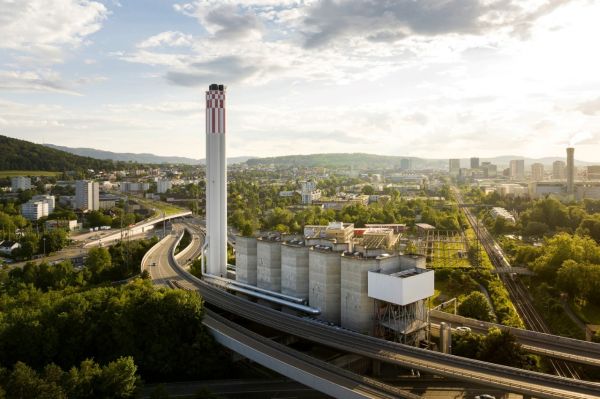
Only untreated fresh wood (forest chips, thinning wood, landscaping wood and untreated residual wood from the wood processing industry) from the forests and landscaping in the region is used. The wood is processed into combustible wood chips while still in the forest and transported to the Aubrugg wood-fired combined heat and power plant , where it is monitored and temporarily stored for incineration. The ash can be used as an aggregate for concrete production.
Pioneering project in Herrliberg
The Herrliberg heating network proves that joint operation of wood-fired systems and heat pumps can even create added value. It consists of two separate thermal networks. The high-temperature network, powered by a wood-fired system, supplies thermal energy to the private homes and public buildings connected to it. The flow temperature of around 75°C is suitable both for heating the buildings and for the preparation of domestic hot water. The low-temperature anergy network uses thermal energy from a geothermal probe and delivers temperatures between 6 and 25°C. Mainly new buildings and newer properties are connected to this cold district heating network. Distributed heat pumps bring the heating water on site to the desired temperatures for space heating and domestic hot water. The anergy grid also offers the option of cooling the connected buildings in summer (free cooling).
Innovative heat recovery
The Herrliberg network wood-fired system features heat recovery with condensation of exhaust gases. The exhaust gases from the wood-fired system are cooled from 160°C to around 25°C before being released to the outside air. The cooling is much stronger than with conventional systems, which only cool the exhaust gases to around 50°C. The thermal energy generated in the process is then used for heat regeneration of the geothermal probe and thus also supplies the anergy grid. Heat recovery increases the efficiency of the wood-fired system in Herrliberg by around 25 per cent, compared to a conventional system where it is just 10 to 15 per cent.
Another advantage of exhaust gas condensation is the reduced steam plume of the wood-fired system’s chimney stack (steam is often mistakenly perceived as smoke). If less steam is emitted, acceptance of the furnace increases. According to Project Manager Füllemann, the exhaust-gas condensation system in Herrliberg works even better than expected and is also easy to maintain. He is confident that comprehensive use of thermal energy provided by exhaust gases via condensation is becoming increasingly relevant, as a resource-efficient use of wood is gaining in importance. Füllemann therefore recommends that exhaust gas condensation is always planned into new wood-fired heating systems.
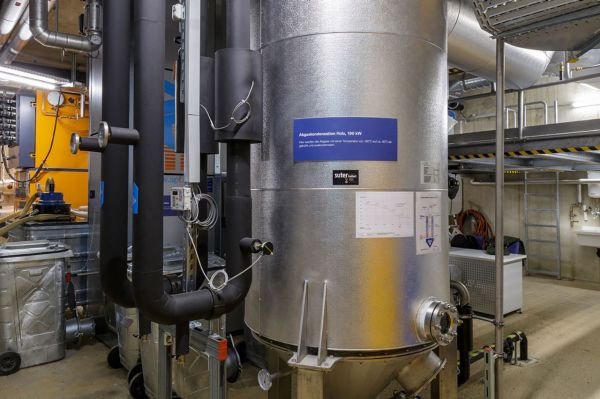
Local raw material
Wood-fired systems are an environmentally friendly and financially attractive alternative to other renewable heating systems such as heat pumps. They use a renewable domestic raw material that does not require long transport routes and generates added value in Switzerland. Heating with wood is also suitable for many different building and project types. Our experienced specialists will be happy to advise and assist you.



